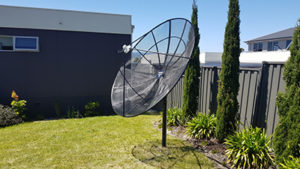

At about that same time, a West Coast group of Hams began toying with the idea of launching an Amateur Radio satellite into orbit. Barely four months after the successful launch of Russia’s Sputnik I, the United States launched Explorer I on 31 January 1958. The story of Amateur Radio satellites begins very near the beginning of America’s other satellite programs. Indeed, over the years, some of these techniques have found their way into “for profit” and government space activities. This document will focus on some of the creative technical and managerial techniques that AMSAT has used to work with donated resources and international teams of volunteer talent to design, build and launch commercial grade communications satellites in a not-for-profit environment. Spacecraft design, development and construction has also occurred in a fiscal environment of individual AMSAT member donations, thousands of hours of volunteer effort, and the creative use of leftover materials donated from aerospace industries worldwide. All of these accomplishments have been achieved through close cooperation with international space agencies that often have provided launch opportunities at significantly reduced costs in return for AMSAT’s technical assistance in developing new ways to launch paying customers.

These breakthroughs have included some of the very first satellite voice transponders as well as highly advanced digital “store-and-forward” messaging transponder techniques. Since the very first OSCAR satellites (OSCAR stands for Orbiting Satellite Carrying Amateur Radio) were launched in the early 1960s, AMSAT’s international volunteers, often working quite literally in their basements and garages, have pioneered a wide variety of new communications technologies that are now taken for granted in the world’s satellite marketplace. For example, international teams of AMSAT volunteers are often formed to help build each other’s space hardware, or to help launch and control each other’s satellites. While the affiliations between the various groups are not formal, they do cooperate very closely with one another. Many of these groups share the “AMSAT” name. Since that time, other like-minded groups throughout the world have formed to pursue the same goals. Its aim is to foster Amateur Radio’s participation in space research and communication. The Radio Amateur Satellite Corporation (as AMSAT is officially known) was formed in 1969 as a not-for-profit, 501(c)(3) educational organization chartered in the District of Columbia. The AMSAT logo is a registered trademark of the Radio Amateur Satellite Corporation Today, over 20 of these satellites are operational.

Since its founding…now over 40 years ago… AMSAT has used predominantly volunteer labor and donated resources to design, construct, and, with the added assistance of international government and commercial agencies, successfully launch, over 60 Amateur Radio satellites into Earth orbit. By any measure, AMSAT’s track record has been impressive.
#Commercial grade satellite downlink software#
FoxTelem Software for Windows, Mac, & Linux.AMSAT Satellite Communication Achievement Award.South Africa AMSAT Satellite Communication Achievement Award.Orbiting Satellites Carrying Amateur Radio.Tools for Spacecraft and Communication Design.Notification of Trademark, Copyright and Other Proprietary Information.


 0 kommentar(er)
0 kommentar(er)
